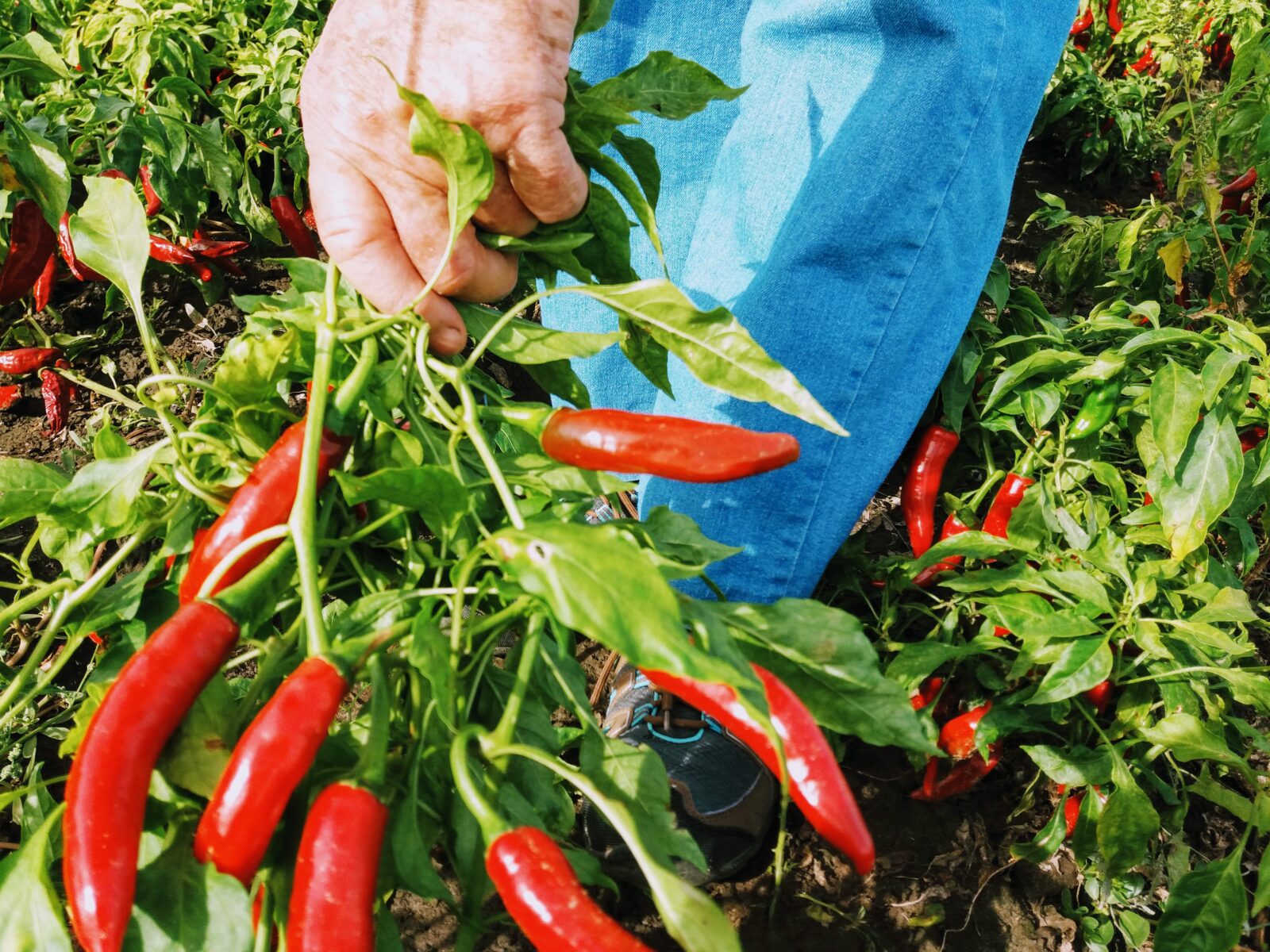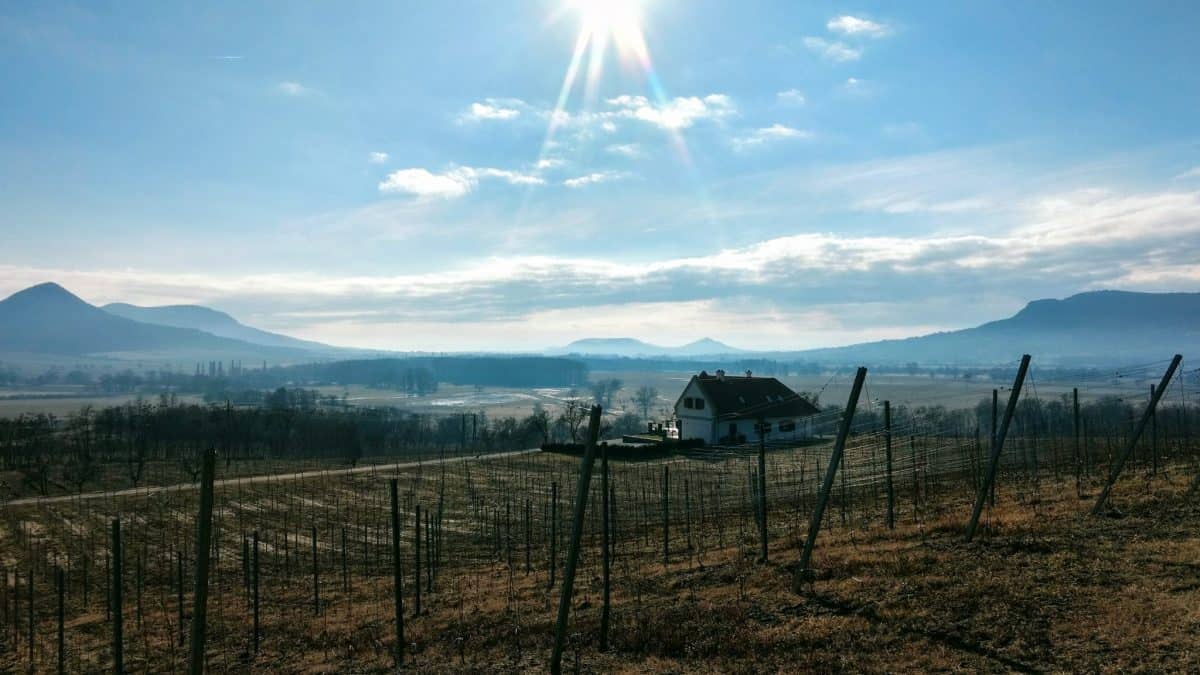Updates
A quick visit to North Balaton and Somló
In late February, we took a quick trip down to the northern shores of Lake Balaton and over to Somló. The lake was frozen solid but it was a bright and sunny day and the first signs of spring were starting to appear. We met with a couple of winemakers to take a first peek at their 2016 wines and to talk about the challenging year they had behind them.

At the Káli Kövek winery, we arrived as Gyula Szabó and his friends were working on the garden of the winery, renovating and building things for the summer season when it opens as a wine bar with food and live music. As the crew was getting ready for lunch, hurka (Hungarian blood sausage) was cooking slowly in the oven, and an eager cat zigzagged between us, Gyula showed us some of his selected wines and some exciting blends that were still aging in barrels in the cellar. The popular fresh Rizling was just bottled and getting ready to drink (and has just hit our shop this week). While some of the wines were still young, all of them were lively, energetic and well-rounded, pleasing to drink, and not extreme or harsh in any way, which is quite an accomplishment given the difficulties of the vintage.
2016 is a year that made lots of winemakers sweat. The weather was as chaotic as it gets: late spring frosts, summer hailstorms, exceptionally hot days followed by large thunderstorms and humid periods, summer heatwaves, heavy autumn rain and more. In some regions, hailstorms devastated large parts of the vineyards; in others, the damage was less extreme, but yields were generally lower everywhere than in most years. Even with less grapes, there was plenty to do in the vineyards throughout the year: the extreme weather changes were a real challenge for most grapes, so wineries had to battle with the weather all year round in the hope of achieving a small but good harvest.
Each region and winery has a different story to tell this year. Most wineries we’ve talked to had to do a lot of selecting and careful harvesting to be satisfied with their wines. But in the end, many of them got there, and the wines are turning out nicely balanced and have the potential to be great wines. Only the healthiest, strongest grapes made it to the end of the season, so we can only hope and wait for the results!

After saying goodbye to Gyula and the Balaton, we drove north to Somló. The black mountain was already recognizable from a distance in the otherwise relatively flat countryside. The ice had just melted off the roads when we arrived, so we were able to go up to the Szent Margit kápolna (St. Margaret chapel) for a view of the sunset over the mountain. We passed by Imre Györgykovács’s vineyard, who is one of our all-time favorite winemakers and merits a post of his own, then took a quick tour of the Kreinbacher’s amazing modern winery. We’ve written about Kreinbacher in the past, but it’s worth repeating that their facilities are one of a kind and a must-see if you’re in the area.

Visiting wineries is always a pleasure, especially when the new wines are looking so good and the first signs of spring are in the air. Satisfied, we hit the road – but not before an obligatory somlói galuska of course. (In case you haven’t heard of it, this is a classic Hungarian dessert full of chocolate, nuts and cream which, despite the name, has no connection to the area. But it tastes delicious, so who’s to complain?)

For German-speakers, here is much more detailed narrative of the Somló hill, with tips on where to go and what to see at reisewege-ungarn.de >>>

 Deutsch
Deutsch

